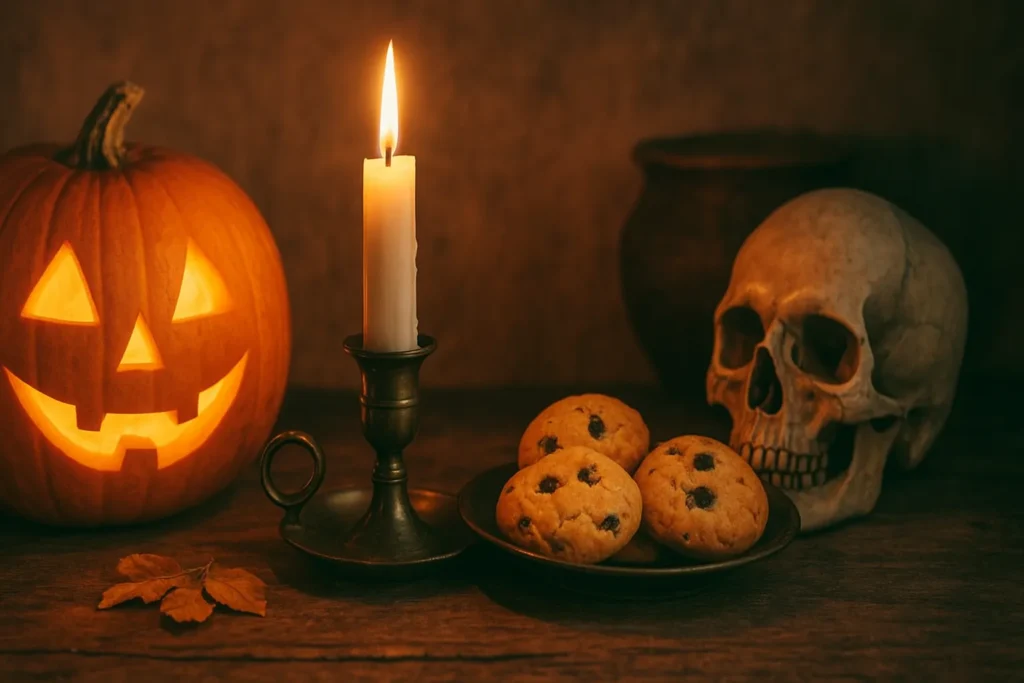
When you think of late October, what comes to mind? Pumpkins, candy, costumes, and maybe that one neighbor who takes yard decorations way too seriously. But before there was Halloween as we know it, there was Hallowmas — an ancient and meaningful celebration that’s been quietly lurking in the shadows of modern trick-or-treating. Long before plastic skeletons and haunted house tours, people honored this season with candles, prayers, and a hearty respect for both the living and the dead. And believe it or not, Hallowmas has as much heart as Halloween has horror.
A Little History: From Holy Days to Haunted Nights
Hallowmas, also known as Allhallowtide, is actually a three-day Christian observance: All Hallows’ Eve (October 31), All Saints’ Day (November 1), and All Souls’ Day (November 2). Together, they formed a sacred time to honor saints, martyrs, and all faithful departed souls.
Think of it as the original trilogy before “Star Wars” — one that starts spooky, gets holy, and ends heartfelt.
In medieval Europe, this was a solemn time. Bells tolled for the dead, candles flickered in remembrance, and families prayed for loved ones who had passed on. But as centuries rolled by, a mix of pagan customs, folk tales, and creative human imagination slowly added masks, mischief, and merriment to the mix — eventually transforming All Hallows’ Eve into what we now call Halloween.
From Piety to Pumpkins: How Hallowmas Shaped Halloween
Let’s face it — humanity loves a good excuse to throw a party. So while Hallowmas was meant for reflection, people also celebrated harvest time and the mysterious change of seasons. The Celts believed that around this period, the barrier between the living and the dead grew thin — meaning that spirits could visit the mortal world.
What started as lighting candles for the departed soon became lighting lanterns carved from turnips (yes, turnips, before pumpkins made their debut in America). Then came costumes — originally worn to disguise yourself from wandering spirits, not just to win a costume contest.
By the time these customs crossed the ocean, America sprinkled in a bit of creativity, a dash of candy, and — voila — Halloween was born! Still, at its core, the spirit of Hallowmas lives on: a time to remember the dead, to celebrate life, and to eat something sweet while doing both.
The Three Days of Hallowmas Explained
To appreciate Hallowmas, it helps to know what each day represents.
- All Hallows’ Eve (October 31) – The night before All Saints’ Day. Originally a time for prayer and fasting, it evolved into a mix of bonfires, games, and yes — dressing up.
- All Saints’ Day (November 1) – A day to honor all saints and holy figures, known and unknown. Think of it as a spiritual roll call for the heavenly all-stars.
- All Souls’ Day (November 2) – Dedicated to remembering ordinary souls — friends, family, and ancestors who’ve passed away. It’s a day to light candles, visit graves, and share stories of those who came before us.
Together, these days form a blend of reflection and celebration — proof that life and death aren’t opposites, but part of the same beautiful cycle.
Traditions and Treats: What People Used to Do
Before the days of chocolate bars and haunted houses, people celebrated Hallowmas with customs that were meaningful and a bit spooky:
- Soul Cakes: Small round cakes given to children and the poor who went door to door, singing prayers for the dead. (Yes, trick-or-treating has ancient roots!)
- Lighting Candles: To guide souls safely to heaven — or at least back home.
- Bell Ringing: Church bells tolled through the night to remind everyone to pray for departed souls.
- Costumes and Masks: Originally used to confuse or ward off wandering spirits. So, dressing as a vampire was basically a safety precaution.
Modern Halloween may be louder and sugar-fueled, but these old traditions remind us that Hallowmas was always about connection — between people, between worlds, and between past and present.
Why Hallowmas Still Matters Today
In our fast-paced, digital age, we often rush through holidays without stopping to think about what they mean. Hallowmas invites us to pause, reflect, and remember those who came before us. It’s not about fear, but about gratitude — gratitude for life, love, and legacy.
Even if you’re not religious, the message still rings true: remembering where we come from helps us understand who we are. So when you light a candle, tell a story about your grandparents, or bake something that smells like childhood, you’re keeping the heart of Hallowmas alive — one sweet, smoky memory at a time.
How to Celebrate Hallowmas (Modern Edition)
If you’d like to honor the spirit of Hallowmas without giving up your pumpkin spice lattes, here are a few fun ideas:
- Light a Candle: Dedicate it to someone you love who’s passed away.
- Bake Soul Cakes: Or cookies — we’re not picky. Share them with neighbors or friends.
- Tell Family Stories: Gather around after dinner and share funny or touching tales about relatives.
- Decorate with Meaning: Mix spooky décor with warm candlelight to balance fun and reflection.
- Practice Gratitude: Write down a few things you’re thankful for — after all, it’s the season of harvest and appreciation.
It’s amazing how a few small actions can bring an ancient holiday back to life (pun totally intended).
Conclusion: Remember the Spirit Behind the Spooks
Hallowmas may not get as much attention as its candy-coated cousin Halloween, but it’s the foundation that gave rise to one of the world’s favorite celebrations. It reminds us that behind every jack-o’-lantern and costume lies something deeper — a human desire to connect with those we’ve lost, to honor their memory, and to celebrate life while we still have it.
So this year, as the nights grow colder and the pumpkins glow brighter, take a moment to remember the quieter side of the season — the side that whispers instead of screams, that prays instead of plays tricks, and that reminds us all that love never really dies.
